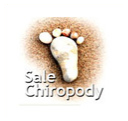Callouses

When we walk or stand, our body weight is carried first on the heel and then on the ball of the foot, where the skin is thicker, to withstand the pressure. When this pressure becomes excessive, some areas of the skin thicken, in the form of corns and callus, as a protective response.
A callus, or callosity, is an area of thickened skin on the soles of the feet on areas of pressure. It is the body’s reaction to this pressure, and canwhere the skin rubs against bone, a shoe, or the ground.
WHAT TO DO You can control a small amount of hard skin by gently rubbing with a pumice stone, or chiropody sponge occasionally when you are in the bath. Use a moisturising cream daily. If this does not appear to be working, seek advice from a registered chiropodist (also known as podiatrist) or pharmacist. If the callus is painful and feels as if you are “walking on stones”, consult a registered chiropodist/podiatrist who will be able to advise you why this has occurred and, where possible, how to prevent it happening again. Your chiropodist/podiatrist can also remove hard skin, relieve pain, and redistribute pressure with soft padding, strapping, or corrective appliances which fit easily into your shoes. The skin should then return to its normal state. The elderly can benefit from padding to the ball of the foot, to compensate for any loss of natural padding. Emollient creams delay callus building up, and help improve the skin’s natural elasticity. Your chiropodist/podiatrist will be able to advise you on the most appropriate skin preparations for your needs.
